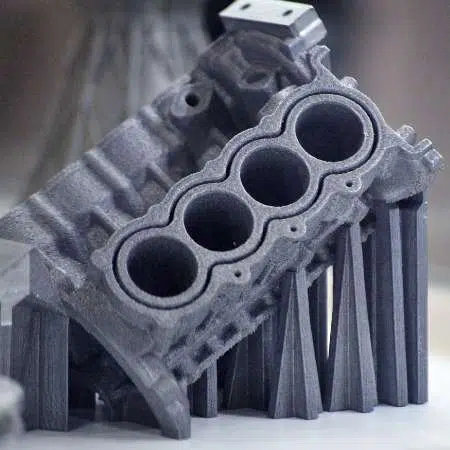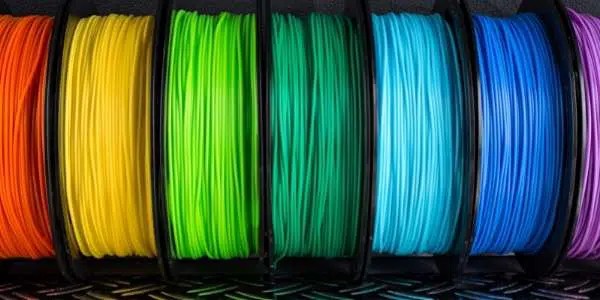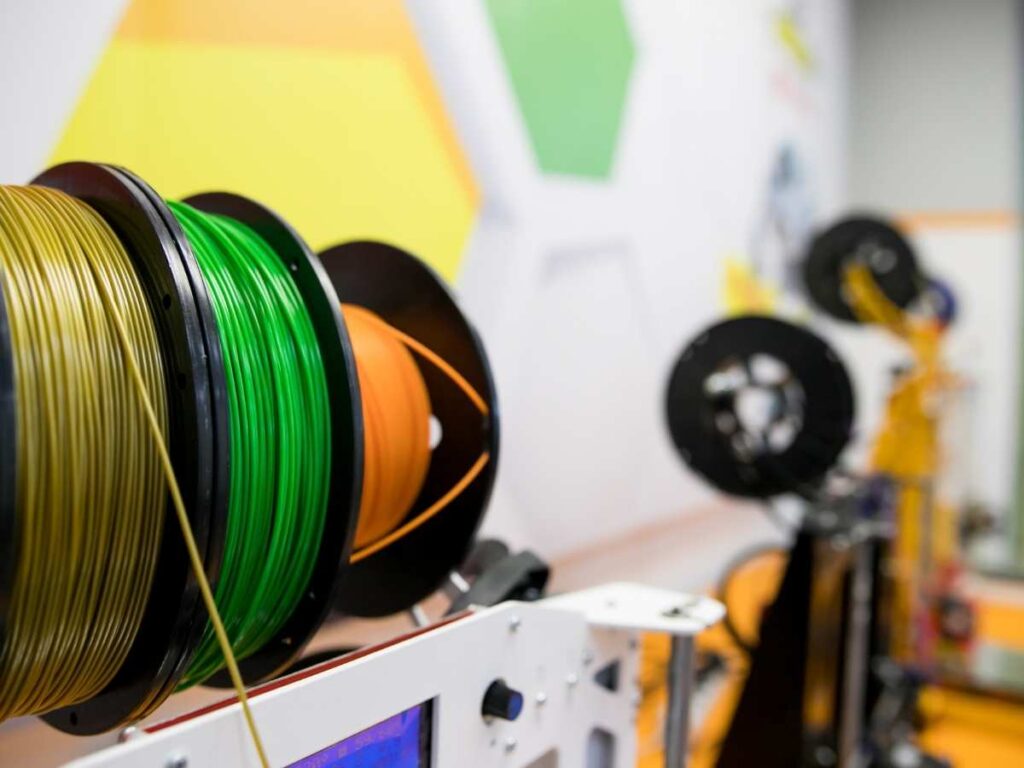3D printers are becoming more affordable as their popularity increases, but 3D printer filament remains expensive. Why is this the case?
Here are 10 reasons why a 3D printer filament is so expensive:
- Lack of design optimization
- Use of metal
- Use of resins
- Use of powdered materials
- Use of additives
- Need for spooling
- Few manufacturers
- Purchase quantities
- Poor project planning
- Use of rare special-purpose materials
This article will illustrate the primary reasons why 3D printer filament is so expensive. Read on to learn why these materials cost what they do and what you can do to drive down the cost of printing.
1. Lack of Design Optimization
One primary reason for the high cost of 3D printing filaments is that most people don’t optimize their designs for the materials. Without good design for additive manufacturing (DFAM) skills, engineers will create end products with excessive support materials, failing to realize the potential in the base materials.
When you optimize the end product’s design, you can reduce the cost of the filament, the electrical load involved in processing the end product, and the amount of time it takes to build. In one case regarding military equipment, a manufacturer cut nearly 70% of the cost making one part just by optimizing the design for the material.
If your team frequently sees failed prints and low machine ROIs, the chances are that they could benefit from DFAM courses. These courses can teach the technical side of manufacturing with a 3D printer, and they are beneficial in addition to basic trial and error.
2. Use of Metals

Not all filaments are expensive; some plastics, like PLA, ABS, and PETG filaments, cost just $20-$25 for a 1kg spool. These filaments are easy to use but then can be a bit brittle and weak. For the best of PLA, try this assortment of 3D PLA Filament Refills by MIKA3D. This pack comes with 24 different colors, bringing your creative visions to life.
For more serious projects, manufacturers will typically use something stronger, like metal-reinforced PEEK filaments. These are stronger and higher quality but cost $30-$400/kg. The metal used to make these filaments is more rare and expensive to produce than pure plastic.
For an example, the strong and metal-reinforced filaments, see the Priline Carbon Fiber Filaments from Amazon.com. They are reinforced to be especially tough and durable yet remain flexible enough to print what you need.
3. Use of Resins
Using resins also adds to the cost of 3D printing. Resins are liquid polymers that harden in response to UV light, and they come in a range of qualities, from entry-level resins to professional-grade dentistry resins. The kind of resin used by dentists to print crowns and metal-infused parts costs anywhere from $100-$400/liter.
Cheaper resins for hobbyists are less expensive, ranging from $30-$50, but they are still more expensive than basic plastics because the materials are rarer. They are used with SLA printers like the SLA Wash and Cure 3D Printer, which provides professional-grade resin-curing in a portable kit for use at home
4. Use of Powdered Materials
Nylon and other powdered materials, common materials for SLS printers, are used when you need a high level of precision, like in industrial applications. They usually cost from $100-$200/kg, although some very high-quality materials, like powdered metal, can be purchased for as much as $700/kg.
5. Use of Additives
Additives like dyes increase the cost of filaments because you’re paying for more than just the base materials. You can cut the cost of your projects by choosing filaments that are their standard, untreated colors instead of one that has dyes or other additives added to the base material.
In addition to dyes, you may find additives like glitter, magnetic iron powder, glow-in-the-dark compounds, or kilnable metal filaments. The rarer that the additive is, the more likely it is that it will be expensive.
6. Need for Spooling
Because 3D filaments are manufactured, shipped, and sold by the spool, they are more expensive to process and carry. Every line of filament needs to be rolled, and the spool itself is heavy, making transport less cost-effective. Ultimately, the filament is bulky to ship because it involves plastic spools.
7. Few Manufacturers
3D printing is relatively new, and so there has until recently been a significant gap in the available materials available versus the need for it. This scarcity has driven up the cost of printer filaments. The more rare forms of printer filaments, like those with reinforced metal, remain more expensive than the more common plastics, like PLA.
8. Purchase Quantities
3D printer filaments are cheaper if you purchase at least 1kg (2.20 lbs) of product at a time. If you purchase 3D printer filaments in lower quantities, that could be why your project is costing you more overall.
On another note, the fact that you need to buy higher qualities at once may make the filaments seem more expensive, simply because you’re buying more at once. Know that this is the best deal for filaments, and 1kg (2.20 lbs) can last you a long time in most cases.

9. Poor Project Planning
Sometimes, you’ll end up paying more for your filaments because you overestimate the quantity of materials that you need or misunderstand the necessary quality for your project. Make sure that you plan your project thoroughly before you get started, or else you might find yourself with leftover product or needing to reprint something low quality.
10. Use of Rare Special-Purpose Materials
Sometimes, people use rare materials for their projects, like ultra-flexible TPU, wood, glow in the dark, and Amorpha filaments. These are only used for special-purpose projects, and because they are rarer, the few manufacturers who sell them can afford to raise the price considerably.
The more exotic and complex to find the kind of filament is, the more expensive it will be. To keep costs low, you can stick with basic PLA, PETG, or ABS filaments without special additives or features.
- Written by:
- Ben
- Last updated:
- 11/11/2023
About Ben
I started 3D printing since 2013 and have learned a lot since then. Because of this I want to share my knowledge of what I have learned in the past years with the community. Currently I own 2 Bambulab X1 Carbon, Prusa SL1S and a Prusa MK3S+. Hope you learn something from my blog after my years of experience in 3D printing.

